-
EXECUTIVE SUMMARY
-
MARKET INTRODUCTION
-
2.1
-
SCOPE OF THE STUDY
-
RESEARCH OBJECTIVE
-
MARKET STRUCTURE
-
2.4
-
ASSUMPTIONS & LIMITATIONS
-
RESEARCH METHODOLOGY
-
DATA MINING
-
SECONDARY RESEARCH
-
PRIMARY RESEARCH
-
BREAKDOWN OF PRIMARY
-
RESPONDENTS
-
FORECASTING TECHNIQUES
-
RESEARCH METHODOLOGY FOR MARKET
- BOTTOM-UP APPROACH
- TOP-DOWN APPROACH
-
SIZE ESTIMATION
-
3.7
-
DATA TRIANGULATION
-
VALIDATION
-
MARKET DYNAMICS
-
OVERVIEW
-
DRIVERS
- INCREASING ADOPTION OF MINIMALLY INVASIVE COSMETIC PROCEDURES
- RISING HEALTHCARE EXPENDITURE AND MARKETING STRATEGIES BY KEY PLAYERS
- GROWING MEDICAL TOURISM INDUSTRY
-
RESTRAINTS
- LACK OF
- CLINICAL RISKS AND COMPLICATIONS RELATED
-
REGULATION IN COSMETIC PROCEDURES
-
TO COSMETIC PROCEDURES
-
OPPORTUNITY
- GROWING ADOPTION OF MINIMALLY
-
INVASIVE COSMETIC PROCEDURES IN EMERGING ECONOMIES
-
COVID-19 IMPACT ANALYSIS
- IMPACT ON GDP GROWTH
- IMPACT ON SUPPLY CHAIN
- IMPACT
- IMPACT ON REGIONS
-
ON DEMAND AND SUPPLY
-
MARKET FACTOR ANALYSIS
-
VALUE CHAIN ANALYSIS
- R&D
- MANUFACTURING
- POST-SALES MONITORING
-
5.1.3
-
DISTRIBUTION AND SALES
-
PORTER'S FIVE FORCES
- THREAT OF NEW ENTRANTS
- BARGAINING POWER OF SUPPLIERS
- THREAT OF SUBSTITUTES
- BARGAINING POWER OF BUYERS
- INTENSITY
-
ANALYSIS
-
OF RIVALRY
-
GLOBAL MINIMALLY INVASIVE COSMETIC PROCEDURES MARKET, BY PRODUCTS
-
OVERVIEW
-
HAIR REMOVAL LASERS
- NEODYMIUM-DOPED YTTRIUM ALUMINUM
- DIODE LASERS
- OTHERS
-
GARNET (ND: YAG) LASER
-
BOTULINUM
- ONABOTULINUMTOXIN A
- INCOBOTULINUMTOXIN A
- OTHERS
-
TOXINS
-
6.3.3
-
RIMABOTULINUMTOXIN B
-
MICRODERMABRASION PRODUCTS
- MICRODERMABRASION CRYSTALS
- MICRODERMABRASION CREAMS AND SCRUB
- OTHERS
-
6.4.1
-
MICRODERMABRASION TIP
-
OXIDE CRYSTALS
-
OXIDE, SODIUM CHLORIDE, AND OTHERS)
-
OTHERS
-
GLOBAL MINIMALLY INVASIVE COSMETIC PROCEDURES
-
MARKET, BY PROCEDURES
-
OVERVIEW
-
BOTULINUM TOXINS
-
SOFT
-
TISSUE FILLERS
-
CHEMICAL PEEL
-
LASER HAIR REMOVAL
-
MICRODERMABRASION
-
OTHERS
-
GLOBAL MINIMALLY INVASIVE COSMETIC PROCEDURES MARKET, BY APPLICATION
-
OVERVIEW
-
ACNE
-
TRAUMA SCARS
-
HYPERPIGMENTATION
-
ADIPOSE TISSUE REGENRATION
-
OTHERS
-
GLOBAL MINIMALLY INVASIVE
-
COSMETIC PROCEDURES MARKET, BY END USER
-
OVERVIEW
-
HOSPITALS
-
DERMATOLOGY CLINICS
-
OTHERS
-
GLOBAL MINIMALLY INVASIVE COSMETIC
-
PROCEDURES MARKET, BY REGION
-
OVERVIEW
-
NORTH AMERICA
- CANADA
-
10.2.1
-
US
-
EUROPE
- GERMANY
- FRANCE
- UK
- ITALY
- SPAIN
- REST OF EUROPE
- CHINA
- JAPAN
- INDIA
- SOUTH
- AUSTRALIA
- REST OF ASIA-PACIFIC
-
10.4
-
ASIA-PACIFIC
-
KOREA
-
REST OF THE
- MIDDLE EAST
- AFRICA
- LATIN AMERICA
-
WORLD
-
11
-
COMPETITIVE LANDSCAPE
-
OVERVIEW
-
COMPETITIVE BENCHMARKING
-
11.3
-
MAJOR GROWTH STRATEGY IN THE GLOBAL MINIMALLY INVASIVE COSMETIC PROCEDURE MARKET
-
THE LEADING PLAYER IN TERMS OF NUMBER OF DEVELOPMENTS IN THE GLOBAL MINIMALLY
-
INVASIVE COSMETIC PROCEDURE MARKET
-
KEY DEVELOPMENT ANALYSIS
- PRODUCT LAUNCH/PRODUCT APPROVAL
- MERGER/ACQUISITION
- PARTNERSHIP/AGREEMENT
-
11.6
-
KEY DEVELOPMENTS & GROWTH STRATEGIES
-
MAJOR PLAYERS
- SALES
- R&D EXPENDITURE
-
FINANCIAL MATRIX
-
COMPANY
-
PROFILES
-
ABBVIE INC.
- COMPANY OVERVIEW
- FINANCIAL
- PRODUCTS/SERVICES OFFERED
- KEY DEVELOPMENTS
-
OVERVIEW
-
12.1.5
-
SWOT ANALYSIS
-
OFFERED
-
OVERVIEW
-
12.3.5
-
KEY STRATEGIES
-
THE PROCTER & GAMBLE COMPANY
- COMPANY OVERVIEW
- FINANCIAL OVERVIEW
- PRODUCTS/SERVICES
- KEY DEVELOPMENTS
- SWOT ANALYSIS
- KEY STRATEGIES
-
KONINKLIJKE PHILIPS NV
- COMPANY OVERVIEW
- FINANCIAL
- PRODUCTS/SERVICES OFFERED
- KEY DEVELOPMENTS
-
SWOT ANALYSIS
-
12.4.1
-
COMPANY OVERVIEW
-
OVERVIEW
-
12.5.5
-
KEY STRATEGIES
-
ALTAIR INSTRUMENTS
- FINANCIAL OVERVIEW
- PRODUCTS/SERVICES OFFERED
- KEY DEVELOPMENTS
- SWOT ANALYSIS
- KEY STRATEGIES
-
SILHOUET-TONE CORPORATION
- COMPANY OVERVIEW
- FINANCIAL
- PRODUCTS/SERVICES OFFERED
- KEY DEVELOPMENTS
-
SWOT ANALYSIS
-
12.6.1
-
COMPANY OVERVIEW
-
ANALYSIS
-
12.8.1
-
COMPANY OVERVIEW
-
OVERVIEW
-
12.9.5
-
KEY STRATEGIES
-
ADVANCED MICRODERM, INC.
- FINANCIAL OVERVIEW
- PRODUCTS/SERVICES OFFERED
- KEY DEVELOPMENTS
- SWOT ANALYSIS
- KEY STRATEGIES
-
DERMAGLOW
- COMPANY OVERVIEW
- FINANCIAL OVERVIEW
- PRODUCTS/SERVICES OFFERED
- KEY DEVELOPMENTS
- SWOT
- KEY STRATEGIES
-
NEW SHINING IMAGE LLC
- FINANCIAL OVERVIEW
- PRODUCTS/SERVICES OFFERED
- KEY DEVELOPMENTS
- SWOT ANALYSIS
- KEY STRATEGIES
-
LASERTEC MEDICAL SERVICES
- COMPANY OVERVIEW
- FINANCIAL
- PRODUCTS/SERVICES OFFERED
- KEY DEVELOPMENTS
-
SWOT ANALYSIS
-
OVERVIEW
-
KEY STRATEGIES
-
CUTERA
- COMPANY
- FINANCIAL OVERVIEW
- PRODUCTS/SERVICES OFFERED
- KEY DEVELOPMENTS
- SWOT ANALYSIS
- KEY STRATEGIES
-
APPENDIX
-
REFERENCES
-
RELATED REPORTS
-
-
LIST
-
OF TABLES
-
LIST OF ASSUMPTIONS & LIMITATIONS
-
TABLE, 2 PRIMARY
-
INTERVIEWS AND INFORMATION GATHERING PROCESS
-
GLOBAL: MINIMALLY INVASIVE
-
COSMETIC PROCEDURES MARKET, BY PRODUCTS, 2023–2030 (USD MILLION)
-
TABLE
-
GLOBAL: MINIMALLY INVASIVE COSMETIC PROCEDURES MARKET, BY HAIR REMOVAL LASERS,
-
GLOBAL: MINIMALLY INVASIVE COSMETIC PROCEDURES
-
MARKET, FOR HAIR REMOVAL LASERS, BY TYPE, 2023–2030 (USD MILLION)
-
TABLE
-
GLOBAL: MINIMALLY INVASIVE COSMETIC PROCEDURES MARKET, FOR NEODYMIUM-DOPED YTTRIUM
-
ALUMINUM GARNET (ND:YAG)LASER, BY REGION, 2023–2030 (USD MILLION)
-
TABLE
-
GLOBAL: MINIMALLY INVASIVE COSMETIC PROCEDURES MARKET, FOR DIODE LASERS, BY REGION,
-
GLOBAL: MINIMALLY INVASIVE COSMETIC PROCEDURES
-
MARKET, FOR OTHERS, BY REGION, 2023–2030 (USD MILLION)
-
GLOBAL:
-
MINIMALLY INVASIVE COSMETIC PROCEDURES MARKET, BY BOTULINUM TOXINS, 2023–2030
-
(USD MILLION)
-
GLOBAL: MINIMALLY INVASIVE COSMETIC PROCEDURES MARKET,
-
FOR BOTULINUM TOXINS, BY TYPE, 2023–2030 (USD MILLION)
-
GLOBAL:
-
MINIMALLY INVASIVE COSMETIC PROCEDURES MARKET, FOR ONABOTULINUMTOXIN A, BY REGION,
-
GLOBAL: MINIMALLY INVASIVE COSMETIC
-
PROCEDURES MARKET, FOR INCOBOTULINUMTOXIN A, BY REGION, 2023–2030 (USD MILLION)
-
GLOBAL: MINIMALLY INVASIVE COSMETIC PROCEDURES MARKET, FOR RIMABOTULINUMTOXIN
-
B, BY REGION, 2023–2030 (USD MILLION)
-
GLOBAL: MINIMALLY INVASIVE
-
COSMETIC PROCEDURES MARKET, FOR OTHERS, BY REGION, 2023–2030 (USD MILLION)
-
GLOBAL: MINIMALLY INVASIVE COSMETIC PROCEDURES MARKET, BY MICRODERMABRASION
-
PRODUCTS, 2023–2030 (USD MILLION)
-
GLOBAL: MINIMALLY INVASIVE
-
COSMETIC PROCEDURES MARKET, FOR MICRODERMABRASION PRODUCTS, BY TYPE, 2023–2030
-
(USD MILLION)
-
GLOBAL: MINIMALLY INVASIVE COSMETIC PROCEDURES MARKET,
-
FOR MICRODERMABRASION TIP, BY REGION, 2023–2030 (USD MILLION)
-
TABLE 18
-
GLOBAL: MINIMALLY INVASIVE COSMETIC PROCEDURES MARKET, FOR MICRODERMABRASION CRYSTALS,
-
BY REGION, 2023–2030 (USD MILLION)
-
GLOBAL: MINIMALLY INVASIVE
-
COSMETIC PROCEDURES MARKET, FOR MICRODERMABRASION CRYSTALS, BY TYPE, 2023–2030
-
(USD MILLION)
-
TABLE, 20 GLOBAL: MINIMALLY INVASIVE COSMETIC PROCEDURES MARKET,
-
FOR ALUMINUM OXIDE CRYSTALS, BY REGION, 2023–2030 (USD MILLION)
-
TABLE,
-
GLOBAL: MINIMALLY INVASIVE COSMETIC PROCEDURES MARKET, FOR SODIUM BICARBONATE
-
CRYSTALS, BY REGION, 2023–2030 (USD MILLION)
-
TABLE, 22 GLOBAL: MINIMALLY
-
INVASIVE COSMETIC PROCEDURES MARKET, FOR OTHERS, BY REGION, 2023–2030 (USD
-
MILLION)
-
TABLE, 23 GLOBAL: MINIMALLY INVASIVE COSMETIC PROCEDURES MARKET, FOR
-
MICRODERMABRASION CREAMS AND SCRUB, BY REGION, 2023–2030 (USD MILLION)
-
TABLE, 24 GLOBAL: MINIMALLY INVASIVE COSMETIC PROCEDURES MARKET, FOR OTHERS, BY
-
REGION, 2023–2030 (USD MILLION)
-
TABLE, 25 GLOBAL: MINIMALLY INVASIVE
-
COSMETIC PROCEDURES MARKET FOR OTHERS, BY REGION, 2023–2030 (USD MILLION)
-
TABLE, 26 GLOBAL: MINIMALLY INVASIVE COSMETIC PROCEDURES MARKET, BY PROCEDURES,
-
TABLE, 27 GLOBAL: MINIMALLY INVASIVE COSMETIC
-
PROCEDURES MARKET, BY BOTULINUM TOXINS, 2023–2030 (USD MILLION)
-
TABLE,
-
GLOBAL: MINIMALLY INVASIVE COSMETIC PROCEDURES MARKET, BY SOFT TISSUE FILLERS,
-
TABLE, 29 GLOBAL: MINIMALLY INVASIVE COSMETIC
-
PROCEDURES MARKET, BY CHEMICAL PEEL, 2023–2030 (USD MILLION)
-
TABLE 30
-
GLOBAL: MINIMALLY INVASIVE COSMETIC PROCEDURES MARKET, BY LASER HAIR REMOVAL, 2023–2030
-
(USD MILLION)
-
GLOBAL: MINIMALLY INVASIVE COSMETIC PROCEDURES MARKET,
-
BY MICRODERMABRASION, 2023–2030 (USD MILLION)
-
GLOBAL: MINIMALLY
-
INVASIVE COSMETIC PROCEDURES MARKET, BY OTHERS, 2023–2030 (USD MILLION)
-
GLOBAL: MINIMALLY INVASIVE COSMETIC PROCEDURES MARKET, BY APPLICATION,
-
GLOBAL: MINIMALLY INVASIVE COSMETIC
-
PROCEDURES MARKET, BY ACNE, 2023–2030 (USD MILLION)
-
GLOBAL:
-
MINIMALLY INVASIVE COSMETIC PROCEDURES MARKET, BY TRAUMA SCARS, 2023–2030
-
(USD MILLION)
-
GLOBAL: MINIMALLY INVASIVE COSMETIC PROCEDURES MARKET,
-
BY HYPERPIGMENTATION, 2023–2030 (USD MILLION)
-
GLOBAL: MINIMALLY
-
INVASIVE COSMETIC PROCEDURES MARKET, BY ADIPOSE TISSUE REGENERATION, 2023–2030
-
(USD MILLION)
-
GLOBAL: MINIMALLY INVASIVE COSMETIC PROCEDURES MARKET,
-
BY OTHERS 2023–2030 (USD MILLION)
-
GLOBAL: MINIMALLY INVASIVE
-
COSMETIC PROCEDURES MARKET, BY END USER, 2023–2030 (USD MILLION)
-
TABLE
-
GLOBAL: MINIMALLY INVASIVE COSMETIC PROCEDURES MARKET, BY HOSPITALS, 2023–2030
-
(USD MILLION)
-
GLOBAL: MINIMALLY INVASIVE COSMETIC PROCEDURES MARKET,
-
BY DERMATOLOGY CLINICS, 2023–2030 (USD MILLION)
-
GLOBAL: MINIMALLY
-
INVASIVE COSMETIC PROCEDURES MARKET, BY OTHERS, 2023–2030 (USD MILLION)
-
GLOBAL: MINIMALLY INVASIVE COSMETIC PROCEDURE MARKET, BY REGION, 2023–2030
-
(USD MILLION)
-
NORTH AMERICA: MINIMALLY INVASIVE COSMETIC PROCEDURE
-
MARKET, BY COUNTRY, 2023–2030 (USD MILLION)
-
NORTH AMERICA: MINIMALLY
-
INVASIVE COSMETIC PROCEDURE MARKET, BY PRODUCTS, 2023–2030 (USD MILLION)
-
NORTH AMERICA: MINIMALLY INVASIVE COSMETIC PROCEDURE MARKET, FOR HAIR
-
REMOVAL LASERS, BY TYPE, 2023–2030 (USD MILLION)
-
NORTH AMERICA:
-
MINIMALLY INVASIVE COSMETIC PROCEDURE MARKET, FOR BOTULINUM TOXINS, BY TYPE, 2023–2030
-
(USD MILLION)
-
NORTH AMERICA: MINIMALLY INVASIVE COSMETIC PROCEDURE
-
MARKET, FOR MICRODERMABRASION PRODUCTS, BY TYPE, 2023–2030 (USD MILLION)
-
NORTH AMERICA: MINIMALLY INVASIVE COSMETIC PROCEDURE MARKET, FOR MICRODERMABRASION
-
CRYSTALS, BY TYPE, 2023–2030 (USD MILLION)
-
NORTH AMERICA: MINIMALLY
-
INVASIVE COSMETIC PROCEDURE MARKET, BY PROCEDURE, 2023–2030 (USD MILLION)
-
NORTH AMERICA: MINIMALLY INVASIVE COSMETIC PROCEDURE MARKET, BY APPLICATION,
-
NORTH AMERICA: MINIMALLY INVASIVE COSMETIC
-
PROCEDURE MARKET, BY END USER, 2023–2030 (USD MILLION)
-
US: MINIMALLY
-
INVASIVE COSMETIC PROCEDURE MARKET, BY PRODUCTS, 2023–2030 (USD MILLION)
-
US: MINIMALLY INVASIVE COSMETIC PROCEDURE MARKET, FOR HAIR REMOVAL LASERS,
-
BY TYPE, 2023–2030 (USD MILLION)
-
US: MINIMALLY INVASIVE COSMETIC
-
PROCEDURE MARKET, FOR BOTULINUM TOXINS, BY TYPE, 2023–2030 (USD MILLION)
-
US: MINIMALLY INVASIVE COSMETIC PROCEDURE MARKET, FOR MICRODERMABRASION
-
PRODUCTS, BY TYPE, 2023–2030 (USD MILLION)
-
US: MINIMALLY INVASIVE
-
COSMETIC PROCEDURE MARKET, FOR MICRODERMABRASION CRYSTALS, BY TYPE, 2023–2030
-
(USD MILLION)
-
US: MINIMALLY INVASIVE COSMETIC PROCEDURE MARKET, BY
-
PROCEDURE, 2023–2030 (USD MILLION)
-
US: MINIMALLY INVASIVE COSMETIC
-
PROCEDURE MARKET, BY APPLICATION, 2023–2030 (USD MILLION)
-
US:
-
MINIMALLY INVASIVE COSMETIC PROCEDURE MARKET, BY END USER, 2023–2030 (USD
-
MILLION)
-
CANADA: MINIMALLY INVASIVE COSMETIC PROCEDURE MARKET, BY
-
PRODUCTS, 2023–2030 (USD MILLION)
-
CANADA: MINIMALLY INVASIVE
-
COSMETIC PROCEDURE MARKET, FOR HAIR REMOVAL LASERS, BY TYPE, 2023–2030 (USD
-
MILLION)
-
CANADA: MINIMALLY INVASIVE COSMETIC PROCEDURE MARKET, FOR
-
BOTULINUM TOXINS, BY TYPE, 2023–2030 (USD MILLION)
-
CANADA: MINIMALLY
-
INVASIVE COSMETIC PROCEDURE MARKET, FOR MICRODERMABRASION PRODUCTS, BY TYPE, 2023–2030
-
(USD MILLION)
-
CANADA: MINIMALLY INVASIVE COSMETIC PROCEDURE MARKET,
-
FOR MICRODERMABRASION CRYSTALS, BY TYPE, 2023–2030 (USD MILLION)
-
TABLE
-
CANADA: MINIMALLY INVASIVE COSMETIC PROCEDURE MARKET, BY PROCEDURE, 2023–2030
-
(USD MILLION)
-
CANADA: MINIMALLY INVASIVE COSMETIC PROCEDURE MARKET,
-
BY APPLICATION, 2023–2030 (USD MILLION)
-
CANADA: MINIMALLY INVASIVE
-
COSMETIC PROCEDURE MARKET, BY END USER, 2023–2030 (USD MILLION)
-
TABLE
-
EUROPE: MINIMALLY INVASIVE COSMETIC PROCEDURE MARKET, BY COUNTRY, 2023–2030
-
(USD MILLION)
-
EUROPE: MINIMALLY INVASIVE COSMETIC PROCEDURE MARKET,
-
BY PRODUCTS, 2023–2030 (USD MILLION)
-
EUROPE: MINIMALLY INVASIVE
-
COSMETIC PROCEDURE MARKET, FOR HAIR REMOVAL LASERS, BY TYPE, 2023–2030 (USD
-
MILLION)
-
EUROPE: MINIMALLY INVASIVE COSMETIC PROCEDURE MARKET, FOR
-
BOTULINUM TOXINS, BY TYPE, 2023–2030 (USD MILLION)
-
EUROPE: MINIMALLY
-
INVASIVE COSMETIC PROCEDURE MARKET, FOR MICRODERMABRASION PRODUCTS, BY TYPE, 2023–2030
-
(USD MILLION)
-
EUROPE: MINIMALLY INVASIVE COSMETIC PROCEDURE MARKET,
-
FOR MICRODERMABRASION CRYSTALS, BY TYPE, 2023–2030 (USD MILLION)
-
TABLE
-
EUROPE: MINIMALLY INVASIVE COSMETIC PROCEDURE MARKET, BY PROCEDURE, 2023–2030
-
(USD MILLION)
-
EUROPE: MINIMALLY INVASIVE COSMETIC PROCEDURE MARKET,
-
BY APPLICATION, 2023–2030 (USD MILLION)
-
EUROPE: MINIMALLY INVASIVE
-
COSMETIC PROCEDURE MARKET, BY END USER, 2023–2030 (USD MILLION)
-
TABLE
-
GERMANY: MINIMALLY INVASIVE COSMETIC PROCEDURE MARKET, BY PRODUCTS, 2023–2030
-
(USD MILLION)
-
GERMANY: MINIMALLY INVASIVE COSMETIC PROCEDURE MARKET,
-
FOR HAIR REMOVAL LASERS, BY TYPE, 2023–2030 (USD MILLION)
-
GERMANY:
-
MINIMALLY INVASIVE COSMETIC PROCEDURE MARKET, FOR BOTULINUM TOXINS, BY TYPE, 2023–2030
-
(USD MILLION)
-
GERMANY: MINIMALLY INVASIVE COSMETIC PROCEDURE MARKET,
-
FOR MICRODERMABRASION PRODUCTS, BY TYPE, 2023–2030 (USD MILLION)
-
TABLE
-
GERMANY: MINIMALLY INVASIVE COSMETIC PROCEDURE MARKET, FOR MICRODERMABRASION
-
CRYSTALS, BY TYPE, 2023–2030 (USD MILLION)
-
GERMANY: MINIMALLY
-
INVASIVE COSMETIC PROCEDURE MARKET, BY PROCEDURE, 2023–2030 (USD MILLION)
-
GERMANY: MINIMALLY INVASIVE COSMETIC PROCEDURE MARKET, BY APPLICATION,
-
GERMANY: MINIMALLY INVASIVE COSMETIC
-
PROCEDURE MARKET, BY END USER, 2023–2030 (USD MILLION)
-
FRANCE:
-
MINIMALLY INVASIVE COSMETIC PROCEDURE MARKET, BY PRODUCTS, 2023–2030 (USD
-
MILLION)
-
FRANCE: MINIMALLY INVASIVE COSMETIC PROCEDURE MARKET, FOR
-
HAIR REMOVAL LASERS, BY TYPE, 2023–2030 (USD MILLION)
-
FRANCE:
-
MINIMALLY INVASIVE COSMETIC PROCEDURE MARKET, FOR BOTULINUM TOXINS, BY TYPE, 2023–2030
-
(USD MILLION)
-
FRANCE: MINIMALLY INVASIVE COSMETIC PROCEDURE MARKET,
-
FOR MICRODERMABRASION PRODUCTS, BY TYPE, 2023–2030 (USD MILLION)
-
TABLE
-
FRANCE: MINIMALLY INVASIVE COSMETIC PROCEDURE MARKET, FOR MICRODERMABRASION CRYSTALS,
-
BY TYPE, 2023–2030 (USD MILLION)
-
FRANCE: MINIMALLY INVASIVE
-
COSMETIC PROCEDURE MARKET, BY PROCEDURE, 2023–2030 (USD MILLION)
-
TABLE
-
FRANCE: MINIMALLY INVASIVE COSMETIC PROCEDURE MARKET, BY APPLICATION, 2023–2030
-
(USD MILLION)
-
FRANCE: MINIMALLY INVASIVE COSMETIC PROCEDURE MARKET,
-
BY END USER, 2023–2030 (USD MILLION)
-
UK: MINIMALLY INVASIVE
-
COSMETIC PROCEDURE MARKET, BY PRODUCTS, 2023–2030 (USD MILLION)
-
TABLE
-
UK: MINIMALLY INVASIVE COSMETIC PROCEDURE MARKET, FOR HAIR REMOVAL LASERS, BY
-
TYPE, 2023–2030 (USD MILLION)
-
UK: MINIMALLY INVASIVE COSMETIC
-
PROCEDURE MARKET, FOR BOTULINUM TOXINS, BY TYPE, 2023–2030 (USD MILLION)
-
UK: MINIMALLY INVASIVE COSMETIC PROCEDURE MARKET, FOR MICRODERMABRASION
-
PRODUCTS, BY TYPE, 2023–2030 (USD MILLION)
-
UK: MINIMALLY INVASIVE
-
COSMETIC PROCEDURE MARKET, FOR MICRODERMABRASION CRYSTALS, BY TYPE, 2023–2030
-
(USD MILLION)
-
UK: MINIMALLY INVASIVE COSMETIC PROCEDURE MARKET, BY
-
PROCEDURE, 2023–2030 (USD MILLION)
-
UK: MINIMALLY INVASIVE COSMETIC
-
PROCEDURE MARKET, BY APPLICATION, 2023–2030 (USD MILLION)
-
UK:
-
MINIMALLY INVASIVE COSMETIC PROCEDURE MARKET, BY END USER, 2023–2030 (USD
-
MILLION)
-
ITALY: MINIMALLY INVASIVE COSMETIC PROCEDURE MARKET, BY
-
PRODUCTS, 2023–2030 (USD MILLION)
-
ITALY: MINIMALLY INVASIVE
-
COSMETIC PROCEDURE MARKET, FOR HAIR REMOVAL LASERS, BY TYPE, 2023–2030 (USD
-
MILLION)
-
ITALY: MINIMALLY INVASIVE COSMETIC PROCEDURE MARKET, FOR
-
BOTULINUM TOXINS, BY TYPE, 2023–2030 (USD MILLION)
-
ITALY: MINIMALLY
-
INVASIVE COSMETIC PROCEDURE MARKET, FOR MICRODERMABRASION PRODUCTS, BY TYPE, 2023–2030
-
(USD MILLION)
-
ITALY: MINIMALLY INVASIVE COSMETIC PROCEDURE MARKET,
-
FOR MICRODERMABRASION CRYSTALS, BY TYPE, 2023–2030 (USD MILLION)
-
TABLE
-
ITALY: MINIMALLY INVASIVE COSMETIC PROCEDURE MARKET, BY PROCEDURE, 2023–2030
-
(USD MILLION)
-
ITALY: MINIMALLY INVASIVE COSMETIC PROCEDURE MARKET,
-
BY APPLICATION, 2023–2030 (USD MILLION)
-
ITALY: MINIMALLY INVASIVE
-
COSMETIC PROCEDURE MARKET, BY END USER, 2023–2030 (USD MILLION)
-
TABLE
-
SPAIN: MINIMALLY INVASIVE COSMETIC PROCEDURE MARKET, BY PRODUCTS, 2023–2030
-
(USD MILLION)
-
SPAIN: MINIMALLY INVASIVE COSMETIC PROCEDURE MARKET,
-
FOR HAIR REMOVAL LASERS, BY TYPE, 2023–2030 (USD MILLION)
-
SPAIN:
-
MINIMALLY INVASIVE COSMETIC PROCEDURE MARKET, FOR BOTULINUM TOXINS, BY TYPE, 2023–2030
-
(USD MILLION)
-
SPAIN: MINIMALLY INVASIVE COSMETIC PROCEDURE MARKET,
-
FOR MICRODERMABRASION PRODUCTS, BY TYPE, 2023–2030 (USD MILLION)
-
TABLE
-
SPAIN: MINIMALLY INVASIVE COSMETIC PROCEDURE MARKET, FOR MICRODERMABRASION CRYSTALS,
-
BY TYPE, 2023–2030 (USD MILLION)
-
SPAIN: MINIMALLY INVASIVE
-
COSMETIC PROCEDURE MARKET, BY PROCEDURE, 2023–2030 (USD MILLION)
-
TABLE
-
SPAIN: MINIMALLY INVASIVE COSMETIC PROCEDURE MARKET, BY APPLICATION, 2023–2030
-
(USD MILLION)
-
SPAIN: MINIMALLY INVASIVE COSMETIC PROCEDURE MARKET,
-
BY END USER, 2023–2030 (USD MILLION)
-
REST OF EUROPE: MINIMALLY
-
INVASIVE COSMETIC PROCEDURE MARKET, BY PRODUCTS, 2023–2030 (USD MILLION)
-
REST OF EUROPE: MINIMALLY INVASIVE COSMETIC PROCEDURE MARKET, FOR HAIR
-
REMOVAL LASERS, BY TYPE, 2023–2030 (USD MILLION)
-
REST OF EUROPE:
-
MINIMALLY INVASIVE COSMETIC PROCEDURE MARKET, FOR BOTULINUM TOXINS, BY TYPE, 2023–2030
-
(USD MILLION)
-
REST OF EUROPE: MINIMALLY INVASIVE COSMETIC PROCEDURE
-
MARKET, FOR MICRODERMABRASION PRODUCTS, BY TYPE, 2023–2030 (USD MILLION)
-
REST OF EUROPE: MINIMALLY INVASIVE COSMETIC PROCEDURE MARKET, FOR MICRODERMABRASION
-
CRYSTALS, BY TYPE, 2023–2030 (USD MILLION)
-
REST OF EUROPE:
-
MINIMALLY INVASIVE COSMETIC PROCEDURE MARKET, BY PROCEDURE, 2023–2030 (USD
-
MILLION)
-
REST OF EUROPE: MINIMALLY INVASIVE COSMETIC PROCEDURE MARKET,
-
BY APPLICATION, 2023–2030 (USD MILLION)
-
REST OF EUROPE: MINIMALLY
-
INVASIVE COSMETIC PROCEDURE MARKET, BY END USER, 2023–2030 (USD MILLION)
-
ASIA-PACIFIC: MINIMALLY INVASIVE COSMETIC PROCEDURE MARKET, BY COUNTRY,
-
ASIA-PACIFIC: MINIMALLY INVASIVE COSMETIC
-
PROCEDURE MARKET, BY PRODUCTS, 2023–2030 (USD MILLION)
-
ASIA-PACIFIC:
-
MINIMALLY INVASIVE COSMETIC PROCEDURE MARKET, FOR HAIR REMOVAL LASERS, BY TYPE,
-
ASIA-PACIFIC: MINIMALLY INVASIVE COSMETIC
-
PROCEDURE MARKET, FOR BOTULINUM TOXINS, BY TYPE, 2023–2030 (USD MILLION)
-
ASIA-PACIFIC: MINIMALLY INVASIVE COSMETIC PROCEDURE MARKET, FOR MICRODERMABRASION
-
PRODUCTS, BY TYPE, 2023–2030 (USD MILLION)
-
ASIA-PACIFIC: MINIMALLY
-
INVASIVE COSMETIC PROCEDURE MARKET, FOR MICRODERMABRASION CRYSTALS, BY TYPE, 2023–2030
-
(USD MILLION)
-
ASIA-PACIFIC: MINIMALLY INVASIVE COSMETIC PROCEDURE
-
MARKET, BY PROCEDURE, 2023–2030 (USD MILLION)
-
ASIA-PACIFIC:
-
MINIMALLY INVASIVE COSMETIC PROCEDURE MARKET, BY APPLICATION, 2023–2030 (USD
-
MILLION)
-
ASIA-PACIFIC: MINIMALLY INVASIVE COSMETIC PROCEDURE MARKET,
-
BY END USER, 2023–2030 (USD MILLION)
-
CHINA: MINIMALLY INVASIVE
-
COSMETIC PROCEDURE MARKET, BY PRODUCTS, 2023–2030 (USD MILLION)
-
TABLE
-
CHINA: MINIMALLY INVASIVE COSMETIC PROCEDURE MARKET, FOR HAIR REMOVAL LASERS,
-
BY TYPE, 2023–2030 (USD MILLION)
-
CHINA: MINIMALLY INVASIVE
-
COSMETIC PROCEDURE MARKET, FOR BOTULINUM TOXINS, BY TYPE, 2023–2030 (USD MILLION)
-
CHINA: MINIMALLY INVASIVE COSMETIC PROCEDURE MARKET, FOR MICRODERMABRASION
-
PRODUCTS, BY TYPE, 2023–2030 (USD MILLION)
-
CHINA: MINIMALLY
-
INVASIVE COSMETIC PROCEDURE MARKET, FOR MICRODERMABRASION CRYSTALS, BY TYPE, 2023–2030
-
(USD MILLION)
-
CHINA: MINIMALLY INVASIVE COSMETIC PROCEDURE MARKET,
-
BY PROCEDURE, 2023–2030 (USD MILLION)
-
CHINA: MINIMALLY INVASIVE
-
COSMETIC PROCEDURE MARKET, BY APPLICATION, 2023–2030 (USD MILLION)
-
TABLE
-
CHINA: MINIMALLY INVASIVE COSMETIC PROCEDURE MARKET, BY END USER, 2023–2030
-
(USD MILLION)
-
JAPAN: MINIMALLY INVASIVE COSMETIC PROCEDURE MARKET,
-
BY PRODUCTS, 2023–2030 (USD MILLION)
-
JAPAN: MINIMALLY INVASIVE
-
COSMETIC PROCEDURE MARKET, FOR HAIR REMOVAL LASERS, BY TYPE, 2023–2030 (USD
-
MILLION)
-
JAPAN: MINIMALLY INVASIVE COSMETIC PROCEDURE MARKET, FOR
-
BOTULINUM TOXINS, BY TYPE, 2023–2030 (USD MILLION)
-
JAPAN: MINIMALLY
-
INVASIVE COSMETIC PROCEDURE MARKET, FOR MICRODERMABRASION PRODUCTS, BY TYPE, 2023–2030
-
(USD MILLION)
-
JAPAN: MINIMALLY INVASIVE COSMETIC PROCEDURE MARKET,
-
FOR MICRODERMABRASION CRYSTALS, BY TYPE, 2023–2030 (USD MILLION)
-
TABLE
-
JAPAN: MINIMALLY INVASIVE COSMETIC PROCEDURE MARKET, BY PROCEDURE, 2023–2030
-
(USD MILLION)
-
JAPAN: MINIMALLY INVASIVE COSMETIC PROCEDURE MARKET,
-
BY APPLICATION, 2023–2030 (USD MILLION)
-
JAPAN: MINIMALLY INVASIVE
-
COSMETIC PROCEDURE MARKET, BY END USER, 2023–2030 (USD MILLION)
-
TABLE
-
INDIA: MINIMALLY INVASIVE COSMETIC PROCEDURE MARKET, BY PRODUCTS, 2023–2030
-
(USD MILLION)
-
INDIA: MINIMALLY INVASIVE COSMETIC PROCEDURE MARKET,
-
FOR HAIR REMOVAL LASERS, BY TYPE, 2023–2030 (USD MILLION)
-
INDIA:
-
MINIMALLY INVASIVE COSMETIC PROCEDURE MARKET, FOR BOTULINUM TOXINS, BY TYPE, 2023–2030
-
(USD MILLION)
-
INDIA: MINIMALLY INVASIVE COSMETIC PROCEDURE MARKET,
-
FOR MICRODERMABRASION PRODUCTS, BY TYPE, 2023–2030 (USD MILLION)
-
TABLE
-
INDIA: MINIMALLY INVASIVE COSMETIC PROCEDURE MARKET, FOR MICRODERMABRASION CRYSTALS,
-
BY TYPE, 2023–2030 (USD MILLION)
-
INDIA: MINIMALLY INVASIVE
-
COSMETIC PROCEDURE MARKET, BY PROCEDURE, 2023–2030 (USD MILLION)
-
TABLE
-
INDIA: MINIMALLY INVASIVE COSMETIC PROCEDURE MARKET, BY APPLICATION, 2023–2030
-
(USD MILLION)
-
INDIA: MINIMALLY INVASIVE COSMETIC PROCEDURE MARKET,
-
BY END USER, 2023–2030 (USD MILLION)
-
SOUTH KOREA: MINIMALLY
-
INVASIVE COSMETIC PROCEDURE MARKET, BY PRODUCTS, 2023–2030 (USD MILLION)
-
SOUTH KOREA: MINIMALLY INVASIVE COSMETIC PROCEDURE MARKET, FOR HAIR
-
REMOVAL LASERS, BY TYPE, 2023–2030 (USD MILLION)
-
SOUTH KOREA:
-
MINIMALLY INVASIVE COSMETIC PROCEDURE MARKET, FOR BOTULINUM TOXINS, BY TYPE, 2023–2030
-
(USD MILLION)
-
SOUTH KOREA: MINIMALLY INVASIVE COSMETIC PROCEDURE
-
MARKET, FOR MICRODERMABRASION PRODUCTS, BY TYPE, 2023–2030 (USD MILLION)
-
SOUTH KOREA: MINIMALLY INVASIVE COSMETIC PROCEDURE MARKET, FOR MICRODERMABRASION
-
CRYSTALS, BY TYPE, 2023–2030 (USD MILLION)
-
SOUTH KOREA: MINIMALLY
-
INVASIVE COSMETIC PROCEDURE MARKET, BY PROCEDURE, 2023–2030 (USD MILLION)
-
SOUTH KOREA: MINIMALLY INVASIVE COSMETIC PROCEDURE MARKET, BY APPLICATION,
-
SOUTH KOREA: MINIMALLY INVASIVE COSMETIC
-
PROCEDURE MARKET, BY END USER, 2023–2030 (USD MILLION)
-
AUSTRALIA:
-
MINIMALLY INVASIVE COSMETIC PROCEDURE MARKET, BY PRODUCTS, 2023–2030 (USD
-
MILLION)
-
AUSTRALIA: MINIMALLY INVASIVE COSMETIC PROCEDURE MARKET,
-
FOR HAIR REMOVAL LASERS, BY TYPE, 2023–2030 (USD MILLION)
-
AUSTRALIA:
-
MINIMALLY INVASIVE COSMETIC PROCEDURE MARKET, FOR BOTULINUM TOXINS, BY TYPE, 2023–2030
-
(USD MILLION)
-
AUSTRALIA: MINIMALLY INVASIVE COSMETIC PROCEDURE MARKET,
-
FOR MICRODERMABRASION PRODUCTS, BY TYPE, 2023–2030 (USD MILLION)
-
TABLE
-
AUSTRALIA: MINIMALLY INVASIVE COSMETIC PROCEDURE MARKET, FOR MICRODERMABRASION
-
CRYSTALS, BY TYPE, 2023–2030 (USD MILLION)
-
AUSTRALIA: MINIMALLY
-
INVASIVE COSMETIC PROCEDURE MARKET, BY PROCEDURE, 2023–2030 (USD MILLION)
-
AUSTRALIA: MINIMALLY INVASIVE COSMETIC PROCEDURE MARKET, BY APPLICATION,
-
AUSTRALIA: MINIMALLY INVASIVE COSMETIC
-
PROCEDURE MARKET, BY END USER, 2023–2030 (USD MILLION)
-
REST
-
OF ASIA-PACIFIC: MINIMALLY INVASIVE COSMETIC PROCEDURE MARKET, BY PRODUCTS, 2023–2030
-
(USD MILLION)
-
REST OF ASIA-PACIFIC: MINIMALLY INVASIVE COSMETIC PROCEDURE
-
MARKET, FOR HAIR REMOVAL LASERS, BY TYPE, 2023–2030 (USD MILLION)
-
TABLE
-
REST OF ASIA-PACIFIC: MINIMALLY INVASIVE COSMETIC PROCEDURE MARKET, FOR BOTULINUM
-
TOXINS, BY TYPE, 2023–2030 (USD MILLION)
-
REST OF ASIA-PACIFIC:
-
MINIMALLY INVASIVE COSMETIC PROCEDURE MARKET, FOR MICRODERMABRASION PRODUCTS, BY
-
TYPE, 2023–2030 (USD MILLION)
-
REST OF ASIA-PACIFIC: MINIMALLY
-
INVASIVE COSMETIC PROCEDURE MARKET, FOR MICRODERMABRASION CRYSTALS, BY TYPE, 2023–2030
-
(USD MILLION)
-
REST OF ASIA-PACIFIC: MINIMALLY INVASIVE COSMETIC PROCEDURE
-
MARKET, BY PROCEDURE, 2023–2030 (USD MILLION)
-
REST OF ASIA-PACIFIC:
-
MINIMALLY INVASIVE COSMETIC PROCEDURE MARKET, BY APPLICATION, 2023–2030 (USD
-
MILLION)
-
REST OF ASIA-PACIFIC: MINIMALLY INVASIVE COSMETIC PROCEDURE
-
MARKET, BY END USER, 2023–2030 (USD MILLION)
-
REST OF THE WORLD:
-
MINIMALLY INVASIVE COSMETIC PROCEDURE MARKET, BY COUNTRY, 2023–2030 (USD MILLION)
-
REST OF THE WORLD: MINIMALLY INVASIVE COSMETIC PROCEDURE MARKET, BY
-
PRODUCTS, 2023–2030 (USD MILLION)
-
REST OF THE WORLD: MINIMALLY
-
INVASIVE COSMETIC PROCEDURE MARKET, FOR HAIR REMOVAL LASERS, BY TYPE, 2023–2030
-
(USD MILLION)
-
REST OF THE WORLD: MINIMALLY INVASIVE COSMETIC PROCEDURE
-
MARKET, FOR BOTULINUM TOXINS, BY TYPE, 2023–2030 (USD MILLION)
-
TABLE
-
REST OF THE WORLD: MINIMALLY INVASIVE COSMETIC PROCEDURE MARKET, FOR MICRODERMABRASION
-
PRODUCTS, BY TYPE, 2023–2030 (USD MILLION)
-
REST OF THE WORLD:
-
MINIMALLY INVASIVE COSMETIC PROCEDURE MARKET, FOR MICRODERMABRASION CRYSTALS, BY
-
TYPE, 2023–2030 (USD MILLION)
-
REST OF THE WORLD: MINIMALLY
-
INVASIVE COSMETIC PROCEDURE MARKET, BY PROCEDURE, 2023–2030 (USD MILLION)
-
REST OF THE WORLD: MINIMALLY INVASIVE COSMETIC PROCEDURE MARKET, BY
-
APPLICATION, 2023–2030 (USD MILLION)
-
REST OF THE WORLD: MINIMALLY
-
INVASIVE COSMETIC PROCEDURE MARKET, BY END USER, 2023–2030 (USD MILLION)
-
MIDDLE EAST: MINIMALLY INVASIVE COSMETIC PROCEDURE MARKET, BY PRODUCTS,
-
MIDDLE EAST: MINIMALLY INVASIVE COSMETIC
-
PROCEDURE MARKET, FOR HAIR REMOVAL LASERS, BY TYPE, 2023–2030 (USD MILLION)
-
MIDDLE EAST: MINIMALLY INVASIVE COSMETIC PROCEDURE MARKET, FOR BOTULINUM
-
TOXINS, BY TYPE, 2023–2030 (USD MILLION)
-
MIDDLE EAST: MINIMALLY
-
INVASIVE COSMETIC PROCEDURE MARKET, FOR MICRODERMABRASION PRODUCTS, BY TYPE, 2023–2030
-
(USD MILLION)
-
MIDDLE EAST: MINIMALLY INVASIVE COSMETIC PROCEDURE
-
MARKET, FOR MICRODERMABRASION CRYSTALS, BY TYPE, 2023–2030 (USD MILLION)
-
MIDDLE EAST: MINIMALLY INVASIVE COSMETIC PROCEDURE MARKET, BY PROCEDURE,
-
MIDDLE EAST: MINIMALLY INVASIVE COSMETIC
-
PROCEDURE MARKET, BY APPLICATION, 2023–2030 (USD MILLION)
-
MIDDLE
-
EAST: MINIMALLY INVASIVE COSMETIC PROCEDURE MARKET, BY END USER, 2023–2030
-
(USD MILLION)
-
TABLE, 200 AFRICA: MINIMALLY INVASIVE COSMETIC PROCEDURE MARKET,
-
BY PRODUCTS, 2023–2030 (USD MILLION)
-
TABLE, 201 AFRICA: MINIMALLY INVASIVE
-
COSMETIC PROCEDURE MARKET, FOR HAIR REMOVAL LASERS, BY TYPE, 2023–2030 (USD
-
MILLION)
-
TABLE, 202 AFRICA: MINIMALLY INVASIVE COSMETIC PROCEDURE MARKET, FOR
-
BOTULINUM TOXINS, BY TYPE, 2023–2030 (USD MILLION)
-
TABLE, 203 AFRICA:
-
MINIMALLY INVASIVE COSMETIC PROCEDURE MARKET, FOR MICRODERMABRASION PRODUCTS, BY
-
TYPE, 2023–2030 (USD MILLION)
-
TABLE, 204 AFRICA: MINIMALLY INVASIVE COSMETIC
-
PROCEDURE MARKET, FOR MICRODERMABRASION CRYSTALS, BY TYPE, 2023–2030 (USD
-
MILLION)
-
TABLE, 205 AFRICA: MINIMALLY INVASIVE COSMETIC PROCEDURE MARKET, BY
-
PROCEDURE, 2023–2030 (USD MILLION)
-
TABLE, 206 AFRICA: MINIMALLY INVASIVE
-
COSMETIC PROCEDURE MARKET, BY APPLICATION, 2023–2030 (USD MILLION)
-
TABLE,
-
AFRICA: MINIMALLY INVASIVE COSMETIC PROCEDURE MARKET, BY END USER, 2023–2030
-
(USD MILLION)
-
TABLE, 208 LATIN AMERICA: MINIMALLY INVASIVE COSMETIC PROCEDURE
-
MARKET, BY PRODUCTS, 2023–2030 (USD MILLION)
-
TABLE, 209 LATIN AMERICA:
-
MINIMALLY INVASIVE COSMETIC PROCEDURE MARKET, FOR HAIR REMOVAL LASERS, BY TYPE,
-
TABLE, 210 LATIN AMERICA: MINIMALLY INVASIVE
-
COSMETIC PROCEDURE MARKET, FOR BOTULINUM TOXINS, BY TYPE, 2023–2030 (USD MILLION)
-
TABLE, 211 LATIN AMERICA: MINIMALLY INVASIVE COSMETIC PROCEDURE MARKET, FOR MICRODERMABRASION
-
PRODUCTS, BY TYPE, 2023–2030 (USD MILL

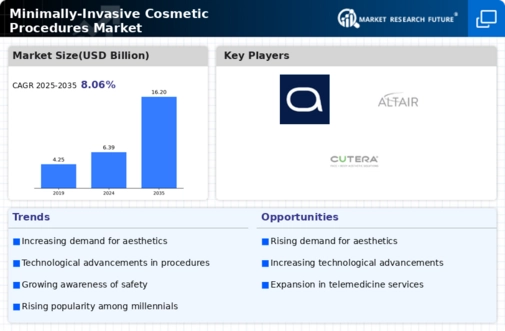
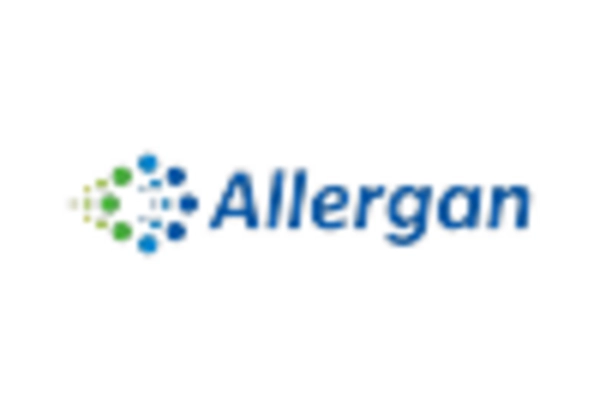
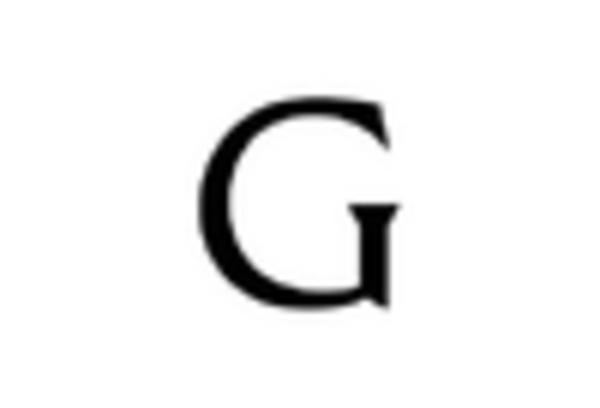
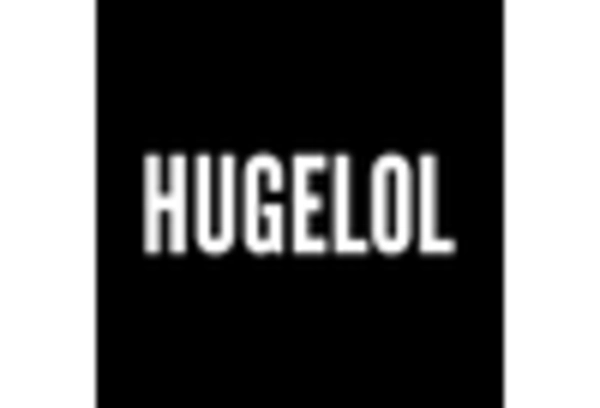
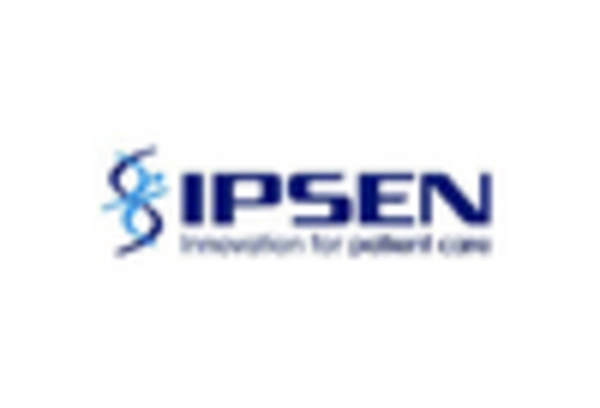
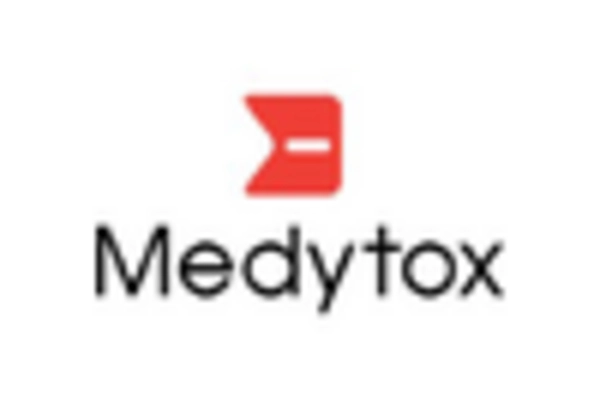
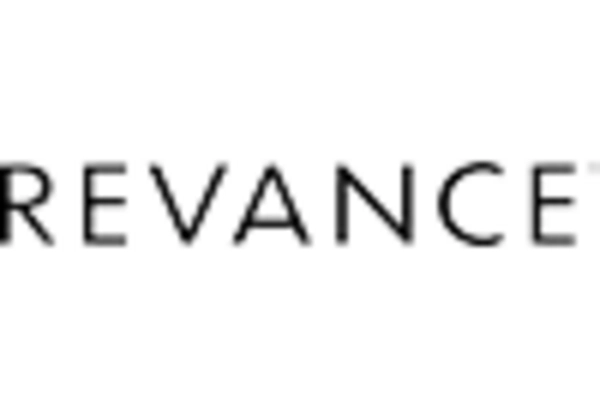

Leave a Comment